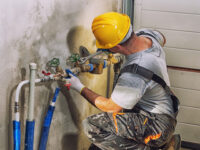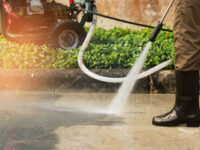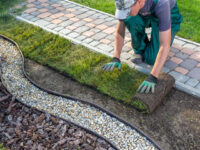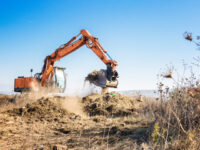How to Succeed in the Plumbing Industry
Plumbing is a vital service that ensures safe, clean water for homes and businesses. It also removes waste and prevents sewage backups. It is important to understand how plumbing works and how to maintain it properly.

Plumbers install, maintain, and repair pipes and fixtures. They may also be responsible for interpreting blueprints and building codes. They can work in a variety of settings, including residential, commercial, and industrial. Contact Rosenberg Plumbing for professional help.
Plumbing is a complex system that evolved with humanity’s need for clean water and sanitation. Its history is a tale of ancient civilizations’ innovations and ingenious minds that sought to make water work for them.
The earliest systems were rudimentary, but they paved the way for future advancements. The Mesopotamian people created rudimentary channels to transport water for irrigation, and the ancient Egyptians used terracotta pipes and aqueducts to bring water into cities. The Romans took these developments a step further by building elaborate sewer systems and aqueducts that were an engineering marvel of their time. The shift from an agricultural society to one based around urban settings further fueled the need for safe waste disposal and improved sanitation.
When the Roman Empire fell, these advances went by the wayside. During the Middle Ages, most cities lacked proper sanitation and relied on fountains and wells for water. This did not bode well for health, hygiene or olfactory receptors.
By the 16th century, Europe began experimenting with indoor plumbing. Sir John Harrington invented the first flush toilet in 1596, but it was not widely adopted until Alexander Cummings patented the modern flushing toilet in 1775. The Tremont Hotel in Boston became the first hotel with indoor plumbing, and it was 20 years later that the White House received running water.
By the 1900s, most developed countries had integrated their sewer systems into their public water supply. The sewage would be transported to treatment plants, where it would be treated and recycled. This significantly reduced the amount of pollution that was dumped into rivers and lakes, which in turn helped improve public health. In the modern era, new technologies like solar heating have allowed plumbers to become more efficient with their water usage, while the advent of plastic pipes has made plumbing less reliant on copper and other costly materials.
Functions
Plumbing is an essential part of any building, providing clean water for drinking and cooking and removing waste and sewage. However, even the best-maintained systems can experience problems from time to time. These issues can range from dripping faucets to clogged drains and water leaks. A plumber can troubleshoot these problems and make necessary repairs. They can also help prevent future problems by ensuring that the system is well-maintained and in good working condition.
Plumbing companies use a variety of tools and machinery for their work. Some are considered fixed assets, which means that they have a useful life of more than one year. These include specialized tools and equipment like drain snakes, pipe cutters, and welding equipment. Other fixed assets include office equipment, such as computers and printers, that are used for administrative tasks. Many plumbing companies require a number of employees to handle the day-to-day operations and business development. In addition to plumbing experts, these businesses may require an HR manager and a payroll specialist.
Dispatch KPIs
Effective dispatch management is key to running a successful plumbing company. Dispatch KPIs can help you monitor and measure your dispatch processes, which can lead to improved customer service and operational efficiency. In addition, dispatch KPIs can help you identify potential areas for cost reduction.
Sales KPIs
As a plumbing services company, you need to track your sales metrics in order to maximize your profits. A good way to do this is by using a Customer Relationship Management (CRM) software. These software solutions can simplify the tracking process and ensure that you’re getting the most out of your business. They also allow you to track the performance of your team members, which can be a powerful tool for identifying opportunities for growth.
Materials
There are many different types of materials used in plumbing. The right one can make your pipes last longer and help you save on maintenance costs. Some of the most common piping materials are copper and PEX. However, you should consult with an experienced plumber to find the best option for your home. They will be able to assess your needs and help you select the right material for your budget.
Historically, galvanized iron pipes were commonly used in residential homes. This sturdy, hardy material resists corrosion well and is ideal for water supply lines. It is durable and can withstand high water pressure and temperature variations. However, its metal construction can corrode over time. Fortunately, modern alternatives like copper and PEX offer improved longevity and resistance to water quality issues.
Other plumbing materials include rubber, PVC, and CPVC. These flexible and cost-effective options are suitable for household drain lines. They can withstand weathering and are resistant to UV rays and ozone exposure. They are easy to install and can be used for both hot and cold water. However, they may not be as durable as some other options and can suffer from the effects of freezing.
Copper is another highly-durable piping material that can withstand high temperatures, water pressure, and acidic water. This material is also easy to repair and has a long lifespan. Its drawbacks include the expense and environmental impact of mining and manufacturing. However, new copper piping has the potential to address these concerns.
Alternatively, you can use PVC pipes for household drain lines and hot and cold water systems. PVC stands for polyvinyl chloride, and it is a type of plastic. The most popular PVC pipe is Schedule 40, which has thick walls that reduce the risk of leaks. It is also easy to cut and fit, reducing installation time. Other types of PVC piping include Schedule 80 and MDI (multi-layered).
Certifications
The plumbing industry encompasses many different areas, from residential repairs to commercial installations. To succeed in the field, you need to be knowledgeable about each area. This will help you determine where to focus your business and provide your customers with the best service possible. You should also have good communication skills to avoid misunderstandings with clients. This will save you time and money in the long run.
The first step is to find a good trade school or apprenticeship program that offers hands-on training in the field of plumbing. After completing the program, you can work as an apprentice plumber under a master plumber to gain experience in the field. Then, you can apply for a plumbing license. This process will require you to meet certain requirements, including passing a written exam and having liability insurance.
You can also get certified as a professional service plumber by the American Society of Sanitary Engineers (ASSE). This certification is designed to ensure that you have the necessary knowledge and skills to perform service on water heaters, toilets, faucets, and other equipment. It will also help you learn how to troubleshoot plumbing problems and keep your equipment running smoothly.
As a result, you will be able to protect your customers’ health and safety. You will also be able to get more job opportunities because employers will know that you have the right skills and experience to do the job. Another benefit of becoming a plumber is that it is a highly respected and well-paying career. It is also a great way to start your own business.
Job outlook
Plumbers are in high demand and offer good pay. They also provide a valuable service to the community, ensuring that people have access to safe drinking water and proper waste management systems. However, some of the negative aspects of this career include physical labor and exposure to hazardous materials. In addition, plumbing can be a dangerous job. It involves crawling under houses and climbing ladders, and may expose workers to risks like back injuries, strains, sprains, and fatigue. To mitigate these risks, plumbers must wear protective gear and follow safety protocols.
To become a plumber, you need to have a high school diploma or equivalent and undergo technical training at a vocational school or trade program. After completing this course, you should enter an apprenticeship to learn practical skills. This can take several years and costs a lot of money, but it is the only way to get the experience needed for a successful career in this field.
After gaining enough experience, you can open your own plumbing company. This is an excellent option for entrepreneurs, as it can help them make a large income and be their own boss. However, you will need at least 10 years of experience to make this work.
The plumber career path is a good choice for people who are looking for a stable and rewarding career. It offers great opportunities for growth and a steady salary, and it is also less stressful than many other careers. However, it requires a high level of problem-solving skills and customer service and is physically demanding. Additionally, you will need to constantly stay updated on new technologies and practices in the industry.






